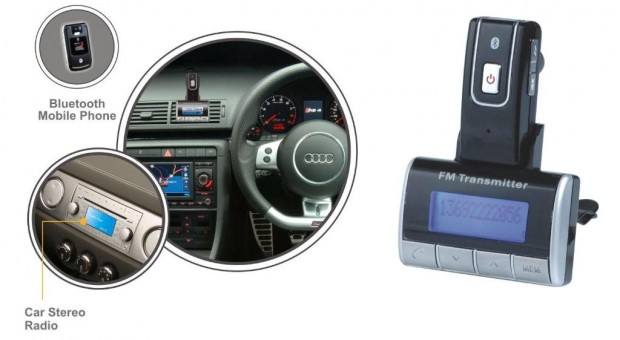
Bluetooth in Your Car: Banging Out the Dents
There is nothing more frustrating than being stuck behind the moron going to slow or swerving in their lane during rush hour traffic; until you pull up alongside that person to see them yapping on their cell phone, which is pinched precariously between their shoulder and head. Many states across the country have enacted hands-free driving laws requiring motorists to use Bluetooth devices while they are behind the wheel.
Bluetooth devices are nothing new and can easily be purchased for as little as $25. As their popularity has increased, automakers from Ford and GM to Honda and BMW have added built-in Bluetooth capability to their cars. This piece of technology has become indispensable in the lives of many, but as a piece of car technology it still has some growing pains to get past.
Current Issues
Perhaps the biggest hurdle facing built-in Bluetooth models is the capacity of automakers to support the ever changing array of mobile devices on the market. While the mobile device market moves at a rapid pace, launching new devices with new connectivity technology on a regular basis, the automotive industry moves much slower.
New car models come out once a year, and once they’re out there is no turning back to improve the connectivity. While the new car model won’t be out for another year, it is feasible that upwards of 10 new smartphones models will launch and end up in the hands of drivers across the country.
Maintaining an easy link between smartphones and the Bluetooth signal in the car is not always easy, but it is necessary. Bluetooth may have started as a high end option in luxury cars, but it is quickly becoming a vital tool in helping drivers stay connected while avoiding the increasingly harsh penalties enacted by states with strict distracted driving laws.
Planning for the Future
Automakers are attempting to close the technology gap with the mobile field and make it less frustrating for drivers to pair their devices to their cars. Lets say you live in New Jersey for example. Before jumping online to search through used cars in New Jersey to find the right one for you, do a little research to make sure the newer model vehicle of your dreams has the latest Bluetooth technology available.
Prior to now, automakers had two ways of pairing devices with vehicle infotainment systems via Bluetooth. There was a separate connection for Bluetooth calling features and streaming audio, and this was often a trip wire for many drivers. However, many newer models are being introduced with Secure Simple Pairing (SSP) technology installed.
SSP technology takes the pain out of connecting Bluetooth devices via different connections using PIN codes that often make it impossible for most drivers to successfully pair devices. SSP provides drivers with a one-time pairing code that once confirmed on the car and device, pairs the two together for all services.
In addition to SSP, there are other exciting changes that drivers should be on the lookout for. These include the following:
– Audio/Video Remote Control Profile (AVRCP): This allows drivers to use the play, pause, rewind, and skip controls on the car to control music streamed from smartphones and other devices.
– Message Access Profile (MAP): This technology displays text messages for drivers or reads them aloud, and some even offer the ability to send preset responses such as “driving, call you in 10 minutes.”
– Serial Port Profile (SPP): Allows vehicle infotainment systems to connect to the Internet via a smartphones wireless connection to download traffic information.
While the union between our mobile devices and our automobiles, the two greatest love affairs for American consumers, is not a perfect one just yet; the union is getting stronger. With these advancements, the headache of pairing a device with an automobile is starting to fade.
Charles Talley is a self-admitted tech nerd and avid blogger. You can find his interesting articles on many blog sites.
















